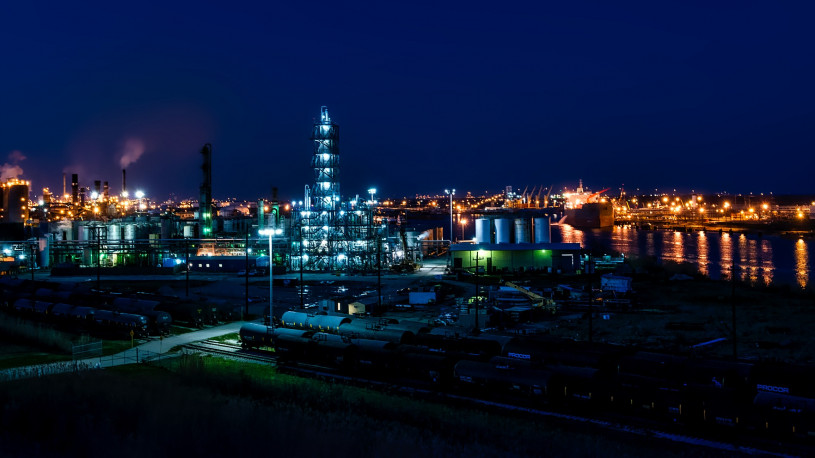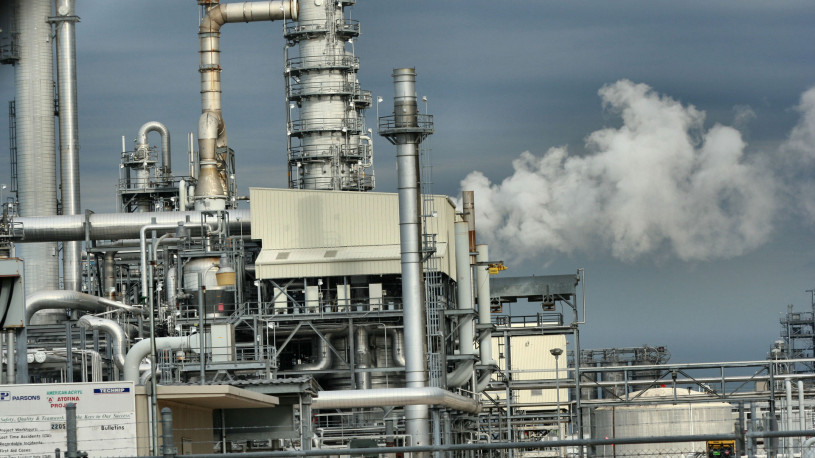-
Top 7 Ways that Chemical Industry Networking is Better Online
 Continue Reading
Continue ReadingAny half-decent businessperson will tell you of the power of networking.
Meeting new contacts, discussing the industry, and finding solutions to work challenges; All of this and more can be done at a networking event or conference.
But in the same way that shopping, dating, and even friendships have gone online, so too has networking. But is that a good thing?
In many ways, yes, online networking has advantages over face-to-face meeting with chemical industry contacts. And here’s how;
1. Convenience.
The modern chemical industry is very international, so the ability to network without leaving your office or even your home makes life much simpler. Today, chemical business networking can be done anywhere with an Internet connection; on the train to work, waiting for a bus, in the minutes between meetings … anywhere.
2. No travel.
No connecting flights, no traffic jams, no soul-less hotel rooms. Online chemical industry networking is cheaper, saves time, and is better for the environment.
3. Recorded Conversation.
Unlike at a conference, online networking can maintain a transcript of what was discussed. This can be referred to even years later, as your online networking account maintains a full record of your contacts.
4. Easy to connect.
No more business cards. No more schmoozing. Online networking shows you who in the network you have most in common with. Need to bring one of your team in on the discussion? No problem, online networking allows for multi-connectivity. Alternatively, networking accounts can be set up as a team, so selected staff can participate. No duplicate emails, no cross-talking, your entire team can stay ‘in the loop’.
5. Ongoing.
Online discussions and networking continue for as long as someone has something to say, so there’s no need to squeeze all you want to say and hear into a two-day event.
6. Speed.
Without the formalities and etiquette of face-to-face meetings, online networking allows participants to get to the point more directly. ‘Here is a topic I want to discuss. Let’s talk.’
During the last century, contacts made were more personal, and maybe lasted for decades, as people stayed in their industry or even with the same firm for their whole working lives. Today, this is less common, with people changing jobs and industries multiple times in their careers, the need for a personal, friendly connection with someone is much less important.
7. Chemical industry focused.
Online networking is able to stay on topic as well as any conference. For example, the SPOTCHEMI platform (who host this page) has been designed for chemical industry professionals to meet, interact, present themselves and their companies, discuss industry trends, and even make offers to buy and sell chemical products, all in one chemical industry hub.
Providing instant access to over 300,000 chemical industry companies, SPOTCHEMI, is a clear example of how online networking is best.
Photo credits: Taxjustice, Fime, Jabil, JellyFishHealth, & Chemconsultants
-
Self-Healing Material ‘Grows’ like a Plant with Carbon Dioxide and Light
 Continue Reading
Continue ReadingResearchers from MIT have produced a new polymer that is able to heal itself by ‘growing’ in a way similar to plants using only carbon dioxide and light.
While the discovery needs further development before it can be used outside of the lab, there is wide-spread potential for a self-healing material, for example in the construction, fabric, and coatings industries.
As the MIT website explains, “The current version of the new material is a synthetic gel-like substance that performs a chemical process similar to the way plants incorporate carbon dioxide from the air into their growing tissues. The material might, for example, be made into panels of a lightweight matrix that could be shipped to a construction site, where they would harden and solidify just from exposure to air and sunlight, thereby saving on the energy and cost of transportation.”
The discovery is a first in chemical engineering and has created a whole new branch of material science that allows for substances to ‘grow’. As Professor Michael Strano, who led the study alongside nine of his colleagues at MIT and the University of California, described, “This is a completely new concept in materials science. [Outside of biology] What we call carbon-fixing materials don’t exist yet.”
The researchers have now published their findings in the journal Advance Materials, where they announce the discovery of, “a gel matrix containing aminopropyl methacrylamide (APMA), glucose oxidase (GOx), and nanoceria‐stabilized extracted chloroplasts that is able to grow, strengthen, and self‐repair using carbon fixation.”
They continue by explaining that, “Glucose produced from the embedded chloroplasts is converted to gluconolactone (GL) via GOx, polymerizing with APMA to form a continuously expanding and strengthening polymethacrylamide.”
This discovery is made clearer via this pictorial representation of the new material’s self-healing properties.
In the presence of light, the material reacts with carbon dioxide in the air to expand and fill the gap, repairing the damage.
But while the science is highly technical and has yet to be applied in a real-world setting, the environmental advantages of the new material are evident. Not only have the team created a synthetic material that does not require fossil fuels as a raw material, but a synthetic material that improves the surrounding environment by absorbing carbon dioxide.
As Strano says, “Imagine a synthetic material that could grow like trees, taking the carbon from the carbon dioxide and incorporating it into the material’s backbone.”
In fact, the discovery is part of a new strain of thinking that is beginning to see carbon dioxide as a useful chemical feedstock rather than simply a waste product or pollutant. As such, carbon fixation could become a breakthrough tool in the circular economy.
“Our work shows that carbon dioxide need not be purely a burden and a cost. It is also an opportunity.” Explains Strano, “There’s carbon everywhere. We build the world with carbon. Humans are made of carbon. Making a material that can access the abundant carbon all around us is a significant opportunity for materials science. In this way, our work is about making materials that are not just carbon neutral, but carbon negative.”
Interested in chemical industry news, trading, trends, and networking?
Connect with like-minded chemical industry professionals at SPOTCHEMI
Photo credit: MIT, ChemistryExplained, Lego, & EPPM
-
Petrochemicals to Influence Future Oil Demand More than Cars, Trucks and Aviation
 Continue Reading
Continue ReadingA report just released by the International Energy Agency states that mankind will soon be using more oil for making petrochemicals than it uses to make fuel. While most petrochemical oil is used on generating energy for chemical production, much is also used as a raw chemical feedstock. As the petrochemical market grows it will increasingly influence oil prices, will be less sustainable, and its impact on climate change will multiply.
As the IEA made clear in its recent press release, “Petrochemicals are set to account for more than a third of the growth in world oil demand to 2030, and nearly half the growth to 2050, adding nearly 7 million barrels of oil a day by then. They are also poised to consume an additional 56 billion cubic metres (bcm) of natural gas by 2030, and 83 bcm by 2050.”
The size and influence of the petrochemical industry is already far-reaching, touching every corner of modern life. Basic petrochemicals are used to make everything from detergents to clothing, digital devices and medical equipment, fertilizers, tyres and packaging.
But of all these products the report, entitled ‘The Future of Petrochemicals’, is quick to highlight how demand for plastics is making the biggest impact. The analysis states that the growth rate of plastic production has more than doubled since 2000. Furthermore, the report explains how this cannot be ascribed purely to increasing global wealth, as the data shows that the use of plastics is now outpacing the use of other modern bulk materials, such as steel, cement, and aluminium.
The report also warns that developed economies have become dependent on petrochemicals. But it also foretells that much of the increased oil consumption will come when developing countries begin to adopt the practices of richer populations.
As the report writes, “Advanced economies currently use up to 20 times more plastic and up to 10 times more fertiliser than developing economies on a per capita basis, underscoring the huge potential for global growth.”
Additionally, the need to produce more food will be another factor driving demand for oil and gas. With global population predicted to reach 9.7 billion by 2050, the use of fossil fuels in the Haber-Bosch process for fertilizer production will also play a part in growing oil consumption.
The consequences of these trends will be far reaching, effecting the ozone layer, air quality, landfill sites, ocean waste, and climate change. As Kendra Pierre-Louis, of the NY Times reports, “Petrochemicals are currently the largest industrial energy consumer and the third-largest industrial emitter of greenhouse gas emissions. The report found that direct greenhouse gas emissions from petrochemicals would increase 20 percent by 2030 and 30 percent by 2050.”
Adding that, “The main driver of the petrochemical industry’s growing climate footprint will be plastics. Worldwide, roughly 300 million metric tons of plastic are produced each year.”
The increase in oil consumption is an unsustainable trend, but the petrochemical industry’s role in that growth has largely stayed out of the public limelight.
As Dr Fatih Birol, the IEA’s Executive Director, notes, “Our economies are heavily dependent on petrochemicals, but the sector receives far less attention than it deserves. Petrochemicals are one of the key blind spots in the global energy debate, especially given the influence they will exert on future energy trends. In fact, our analysis shows they will have a greater influence on the future of oil demand than cars, trucks and aviation.”
While great progress has been made to lessen oil-dependency in other industries, the chemical industry has yet to follow suit. For example, the transport industry has come a long way to reduce oil consumption, with more efficient engines, lighter cars, increased use of biofuels, and the development of electric cars. The energy industry has invested heavily in alternative supply sources such as wind, wave, and solar, while the construction industry has developed homes that are much better insulated.
Meanwhile, in many ways the petrochemicals industry has escaped public and political scrutiny and has therefore failed to develop more sustainable chemical feedstocks.
Ironically however, sometimes it is the increased role of oil-based plastics in other industries that has helped them to lessen their fuel consumption. For example, modern cars are lighter as so many parts are made from plastic or plastic composites. Similarly, solar panels and wind and wave turbines are also made with plenty of plastic, while plastic windows and petrochemical foams and insulants have reduced heating costs.
However, this is not to excuse the responsibility that the petrochemicals industry has in lessening its oil dependency.
As the online scientific journal Futurism, notes, “Decreasing emissions in the transportation and energy sectors while increasing the carbon footprint of plastics and other chemicals isn’t exactly a win for the environment.”
If you want to read more about chemical industry trends, chemical feedstock sustainability, and chemical supplier news, then check out other articles in the SPOTCHEMI blog page.
However, the comparison is stark. What other historically oil-dependent industries have achieved shows the change that is possible. The chemical industry has invested in alternative raw materials, but has yet to make them mainstream. Perhaps reports like this, and the recent report on global warming by the UN’s Intergovernmental Panel on Climate Change (IPCC), will give us all the impetus to push for more and more sustainable chemical raw materials.
Photo credit: IEA, PCQ, IMGKid, Deepetro, BrunswickShipping, & BusinessInsider

